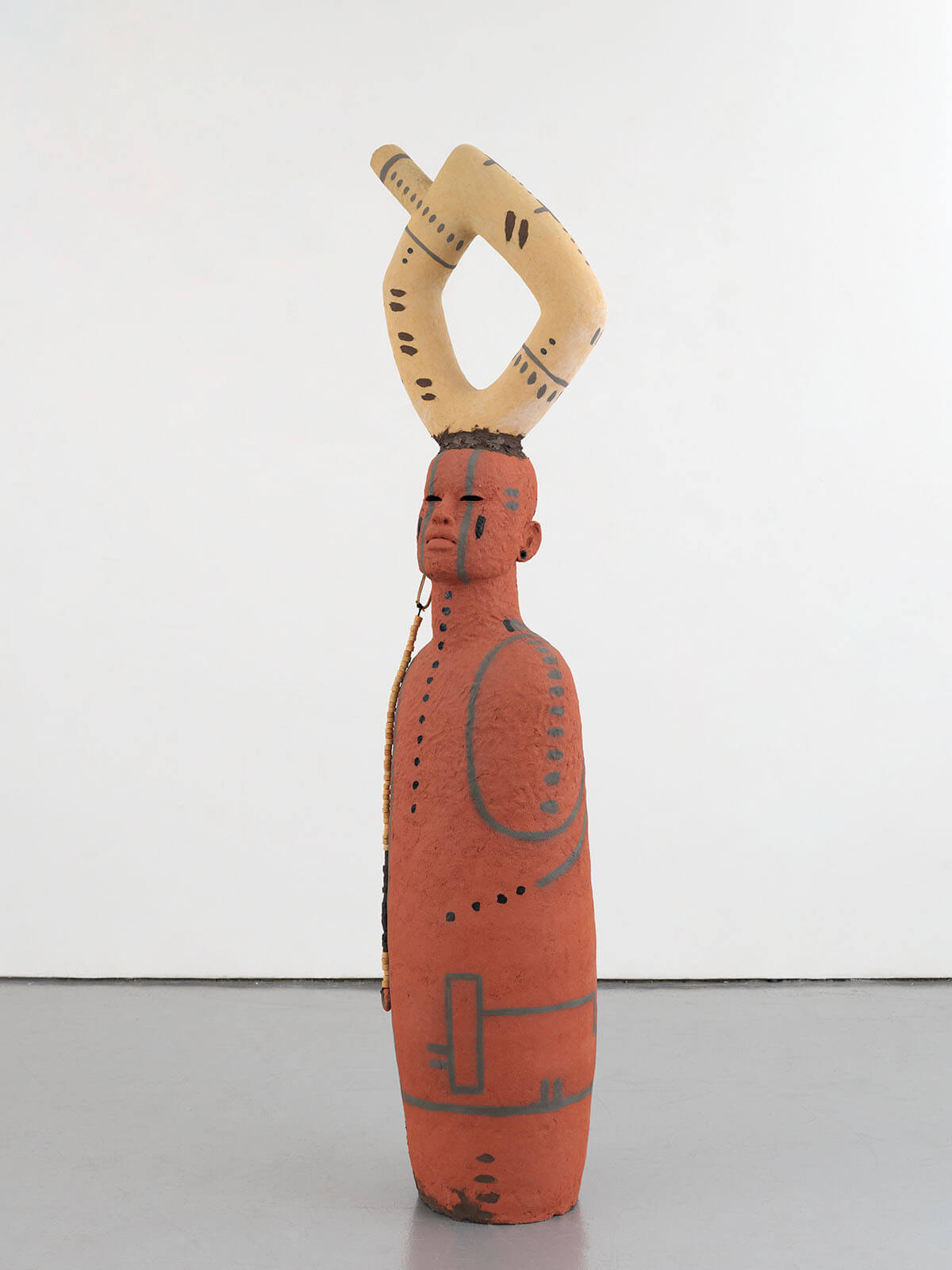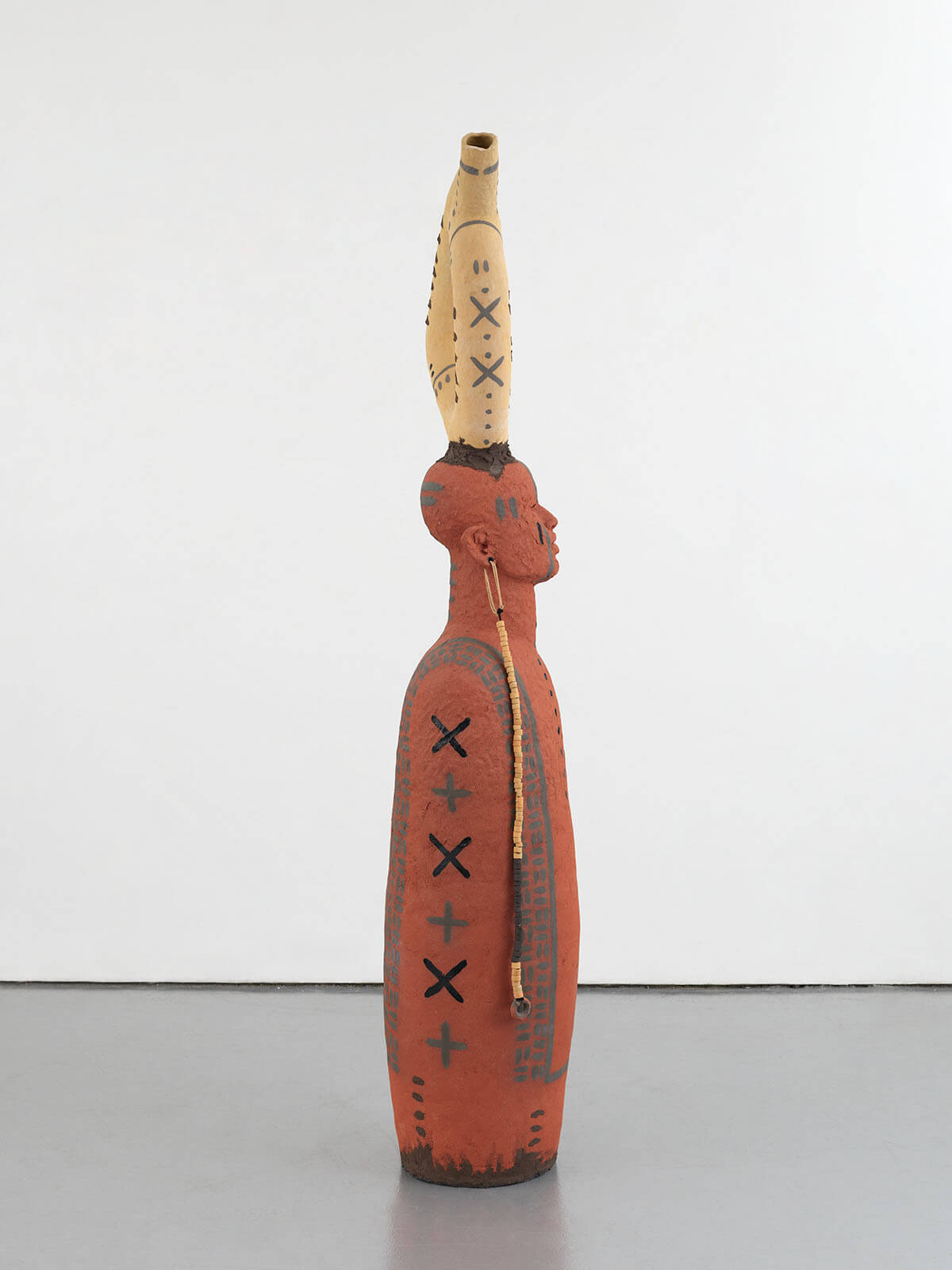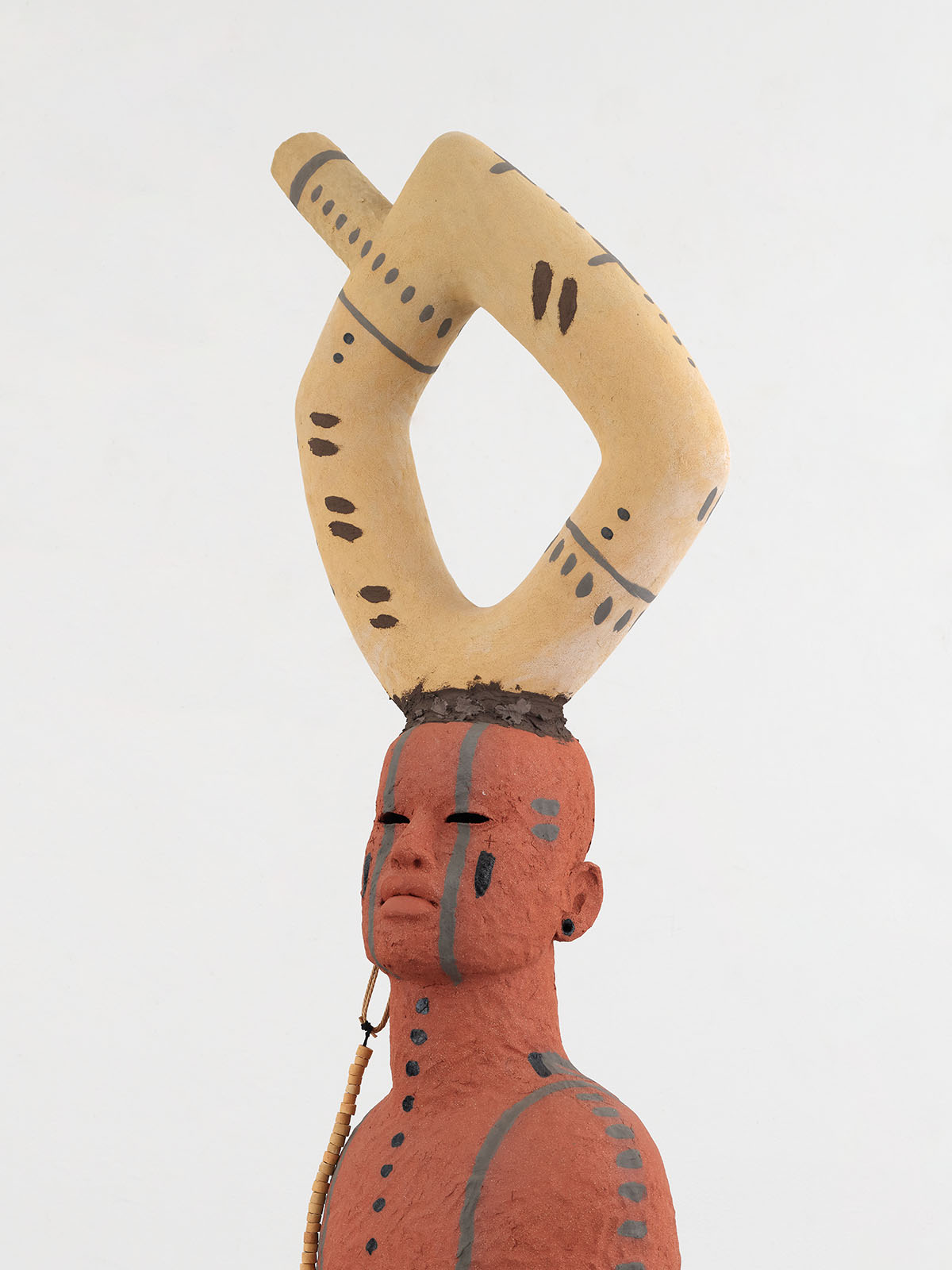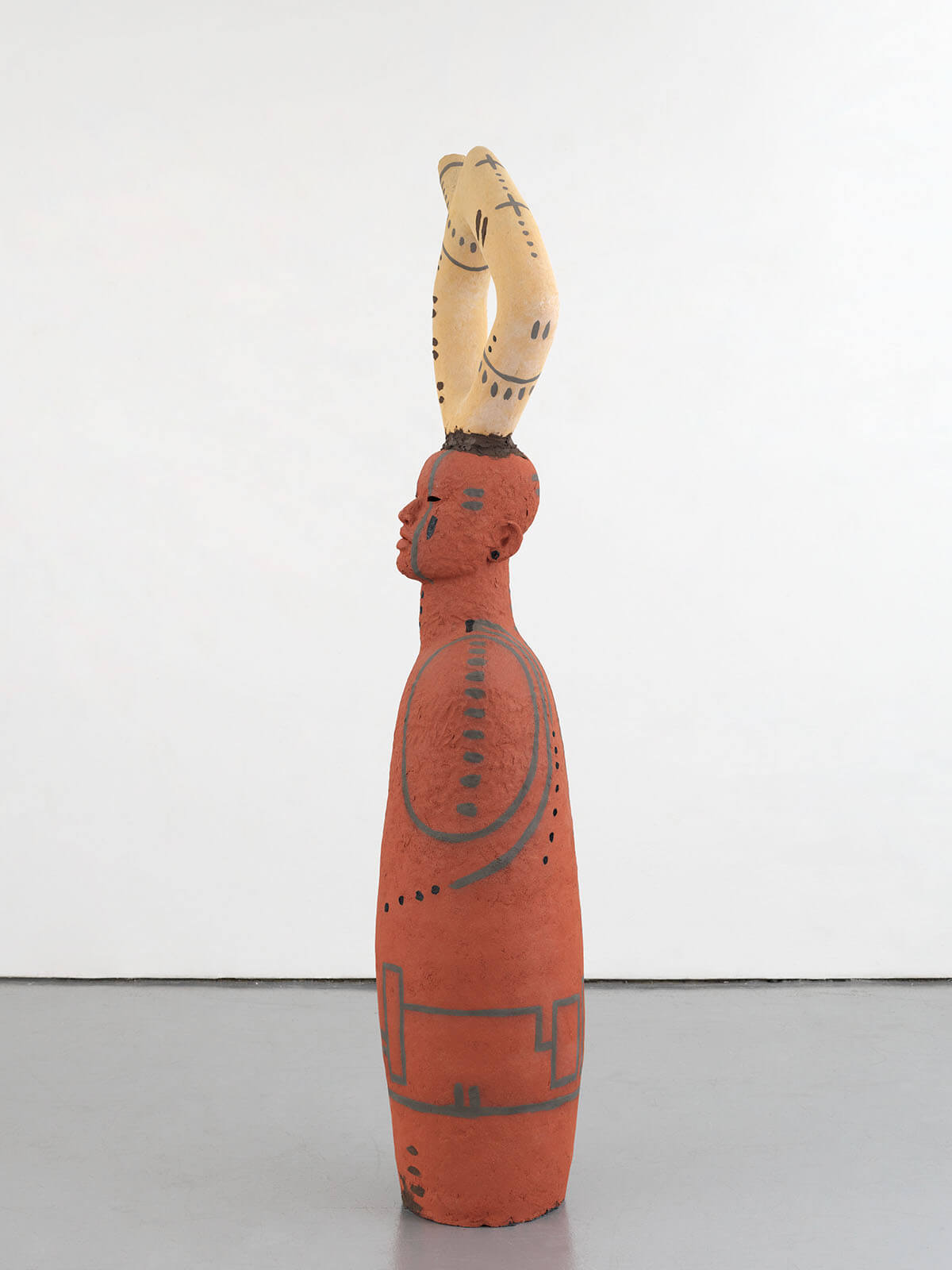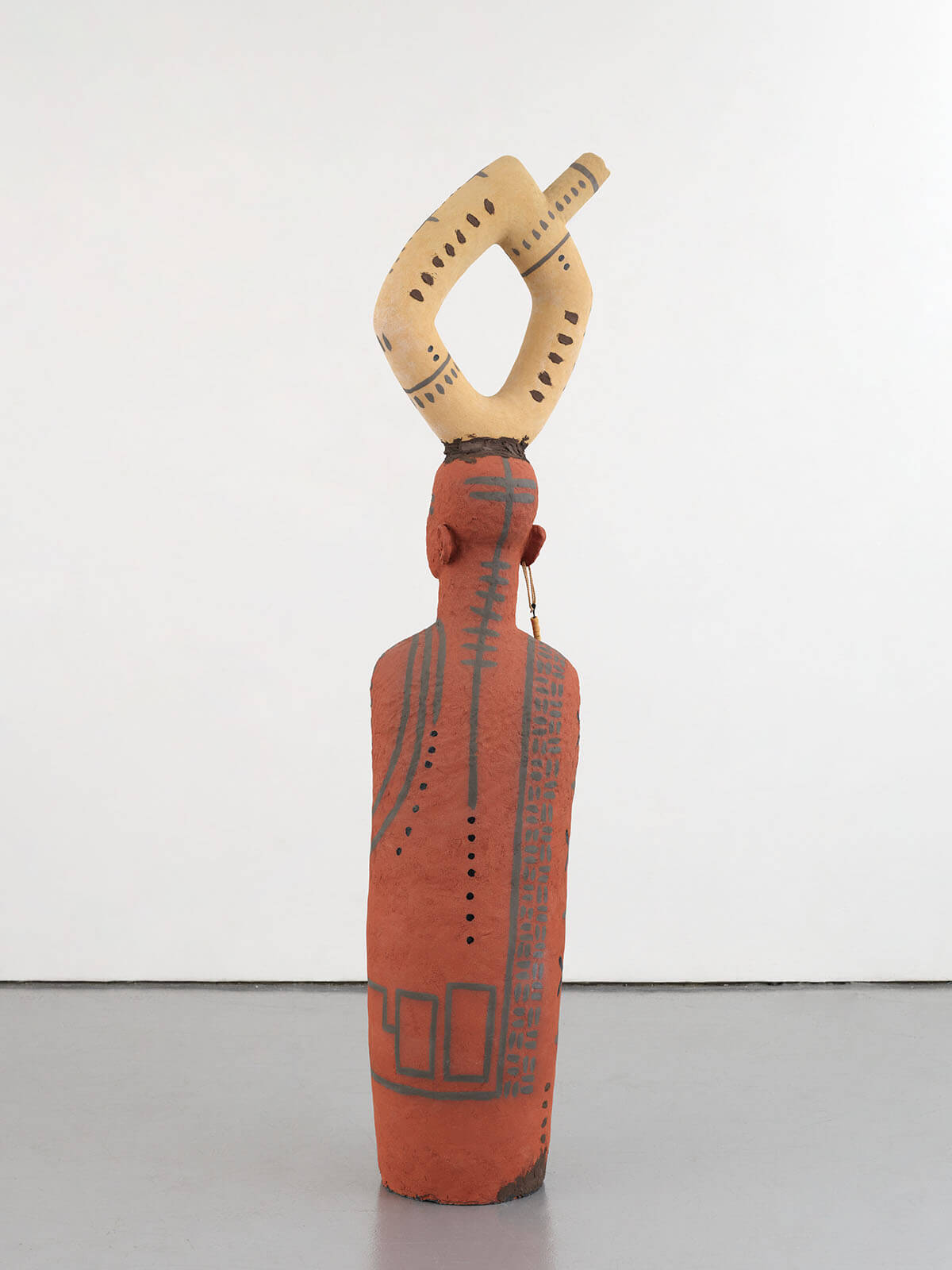Rose B. Simpson, Vital Organ: Gut (2022)
–
Rose B. Simpson works across media: steel, leather, beads, linen, car parts, jute string, volcanic stone. Over the past decade, she has repeatedly turned to ceramic sculpture in order to disclose the capacities of the body to bear witness, harness attention, make new bodies, resist sedimented structures of settler violence, and articulate pathways to mytho-scifi futures. Simpson’s experiments in clay rework a material molded by generations of her family in northern New Mexico, where she grew up on the Santa Clara Pueblo and still lives. In Vital Organ: Gut, traces of touch complicate the whole of the glazed, earthen surface. The curved, androgynous form is marked by black and gray lines, symbols, and rows of dots and dense markings, evoking both vessel and votive. On its head sits a rounded, hollow, angled rectangular form, topped by a spout-like opening. The form suggests both the externalization and the avatar of the gut: a vital part lifted out of the cavernous interior but also a show of tension between holding and void. Balanced aloft and bared to the world, the gut seems to shed its fleshy vulnerability. But incorporated into the work’s particular abstraction—Simpson has referred the cross and x’ed symbols to, respectively, the cardinal points and protective force without systematically glossing her languages—it locates vitality within Simpson’s negotiation of opacity as a strategy of cultural survival and her pursuit of artmaking as a radical opening of the self.

